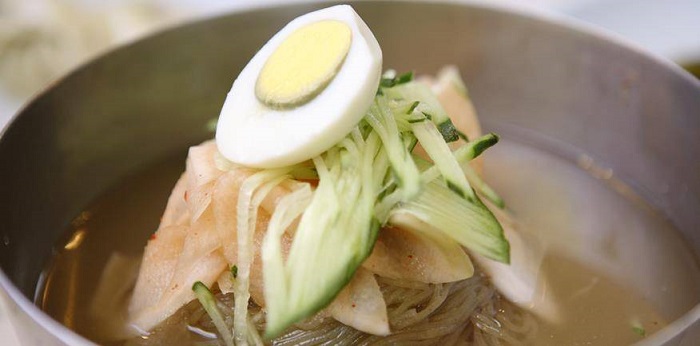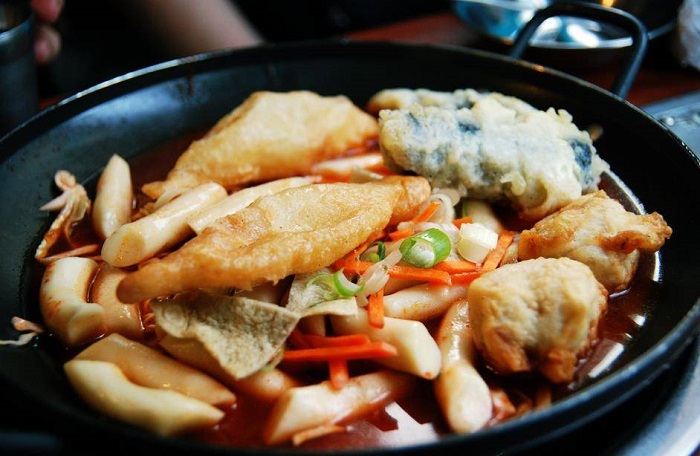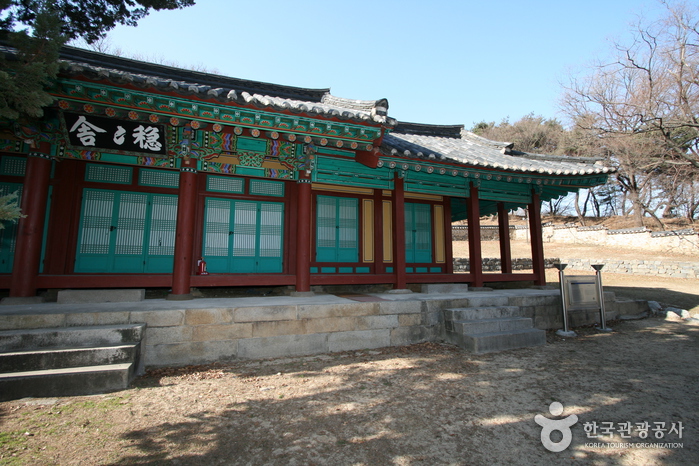Let's Run Park Seoul (렛츠런파크 서울)
14.3Km 2020-09-01
107, Gyeongmagongwon-daero, Gwacheon-si, Gyeonggi-do
+82-1566-3333
Located north of Seoul Grand Park and Seoulland, Let's Run Park is an international-scale horse racing park. The park was constructed between May 1984 and July 1988, hosting events during both the 1986 Asian Games and the 1988 Seoul Olympics before opening to the general public in September 1989. Main facilities include the race course and grandstand. The grandstand is a large, 6-story building with a single basement level. Each floor offers convenient amenities, including race tickets, restaurants, and snack bars.
The North Face - Guui Branch [Tax Refund Shop] (노스페이스구의점)
14.3Km 2024-04-19
81, Jayang-ro, Gwangjin-gu, Seoul
-
Seobungmyeonok (서북면옥)
14.3Km 2021-04-20
199-1, Jayang-ro, Gwangjin-gu, Seoul
+82-2-457-8319
It is a 100-year-old store that has been loved by customers for a long time while maintaining its reputation for over 30 years. This Korean dishes restaurant is located in Gwangjin-gu, Seoul. The representative menu is cold buckwheat noodles.
Korea Medical Association Co,ltd. (주식회사 한국의료협회)
14.3Km 2025-07-29
(B1-415), 375 Achasan-ro, Gwangjin-gu, Seoul
The Korea Medical Association (KMA) continuously receives patients through a global network of Korean expatriates, numerous contracted agencies in various countries, and partnerships with hospitals, clinics, and healthcare platforms.
Following the footsteps of well-established countries in attracting international patients, such as Thailand and Singapore, other nations like Malaysia, Costa Rica, and Taiwan, known for providing high-quality domestic medical services, are now focusing on attracting international patients through major hospitals.
In this competitive international landscape, KMA is introducing patient-centered services like optimal matching, telehealth care service, My Health Data service, and medical dispute legal systems, to highlight the advantages of Korean healthcare and maintain high service quality.
KMA has contracts with all types of medical institutions in Korea, including general hospitals, specialized hospitals, and clinics. The association aims to provide the best hospital selection and healthcare services tailored to each patient's condition and budget.
Olive Young - Guui Station Branch [Tax Refund Shop] (올리브영 구의역점)
14.3Km 2024-06-27
1F, 378, Achasan-ro, Gwangjin-gu, Seoul
-
Modurang (모두랑)
14.4Km 2021-03-29
24, Jayang-ro 28-gil, Gwangjin-gu, Seoul
+82-2-457-1178
You can enjoy Tteokbokki, Korea's representative street food. This Korean dishes restaurant is located in Gwangjin-gu, Seoul. The representative menu is stir-fried rice cake.
Seoul Doseonsa Temple (도선사(서울))
14.4Km 2025-06-25
504 Samyang-ro 173-gil, Gangbuk-gu, Seoul
Doseonsa Temple was established 1,100 years ago during the latter part of the Silla Kingdom when the renowned Buddhist priest Doseonguksa was traveling through the mountains. After visiting the site, Doseonguksa made a prophecy that led to the construction of the temple. According to legend, he used only his walking stick to carve the large Bodhisattva that sits at the temple. Interestingly enough, the statue does not show any evidence of chisel marks, further adding to the mystery of how the statue was made.
During the 7th year of King Gwangmu of the Joseon dynasty, Doseonsa Temple was officially named the representative temple of Korea with the purpose of promoting Cheongdamdaejongsa's Korean Buddhism movement, aiming at a religious revival. Due to these special circumstances Deseonsa Temple gained a high reputation and much recognition, which have held strong to this day.
Inside the temple, visitors can view the remains and written works of Cheongdamdaejongsa in the Cheongdamdaejongsa Memorial Hall. Next to the road leading to Cheonbuljeon Hall is a pond where you can toss a coin and make a wish and just past Yongammun Gate is a hiking path connecting Baegundae Cliff and Insubong Peak. Inside the Ksitigarbha Hall are portraits of President Park Chung-hee, Yuk Yeong-su, and Hyundai Chairman Chung Ju-yung. In front of the hall is a tree that is said to have been planted by a Buddhist priest who brought it from India 200 years ago. Historical artifacts can be found throughout the temple.
Ononsa Guesthouse (온온사)
14.4Km 2023-07-17
58 Gwanaksan-gil, Gwacheon-si, Gyeonggi-do
Though Ononsa, which was a guesthouse in Gwacheon, was constructed in the 27th year of King Injo's reign in the Joseon dynasty (1649), the name, "Ononsa," was given to this area during the reign of King Jeongjo. On February 11, 1790 during his royal procession to the tomb of his father, Crown Prince Sado, stayed at an inn in Gwacheon and, as he felt that it "has nice views and provides a comfortable stay," he bestowed upon the place plaques that he wrote himself - "Ononsa" to Seoheon and "Burimheon," which was the old nickname of Gwacheon, to Dongheon. This is how this place began to be called Ononsa.
It was designated as a Tangible Cultural Heritage of Gyeonggi-do on June 2, 1980, and it was restored on December 2, 1986 after being torn down.
Bukhansan Dulle Trail Section 1 ([북한산 둘레길] 1 소나무숲길 )
14.4Km 2024-01-04
12 Samyang-ro 173-gil, Gangbuk-gu, Seoul
Bukhansan Mountain is a mountain representing Seoul, which 5 million people visit every year. It is not easy to hike up to the top, but the dulle trail allows one to enjoy the beauty of the mountain without too much effort. Bukhansan Dulle Trail is a low-lying, horizontal walking trail created by connecting and refining existing side paths, allowing for a leisurely walk along the foot of the mountain. The Pine Forest Trail, one section of the trail consisting of 21 themes, is 2.9 kilometers long from the entrance to Uiryeong Trail to the top of Solbat Neighborhood Park. It is filled with majestic pine trees, and the road is wide and gentle, making it a perfect place to enjoy a walk. Most of the section is shaded by trees, so visitors can feel cool while walking up even on hot summer days.
Taerim Sanchaejeongsik (태림 산채정식)
14.4Km 2021-03-30
32, Nohae-ro 60-gil, Dobong-gu, Seoul
+82-2-998-5468
This restaurant is famous for its dishes of wild vegetables, Deodeok and roots of balloon flowers.
Grilled sliced pork comes with Table d’hote of assorted wild vegetables and grilled Deodeok, and is also very tasty. Water kimchi made from mineral water is deliciously spicy as well.
*Best Korean Restaurant as designated by The Seoul Metropolitan Government




![Bukhansan Dulle Trail Section 1 ([북한산 둘레길] 1 소나무숲길 )](http://tong.visitkorea.or.kr/cms/resource/30/1898430_image2_1.jpg)
 English
English
 한국어
한국어 日本語
日本語 中文(简体)
中文(简体) Deutsch
Deutsch Français
Français Español
Español Русский
Русский